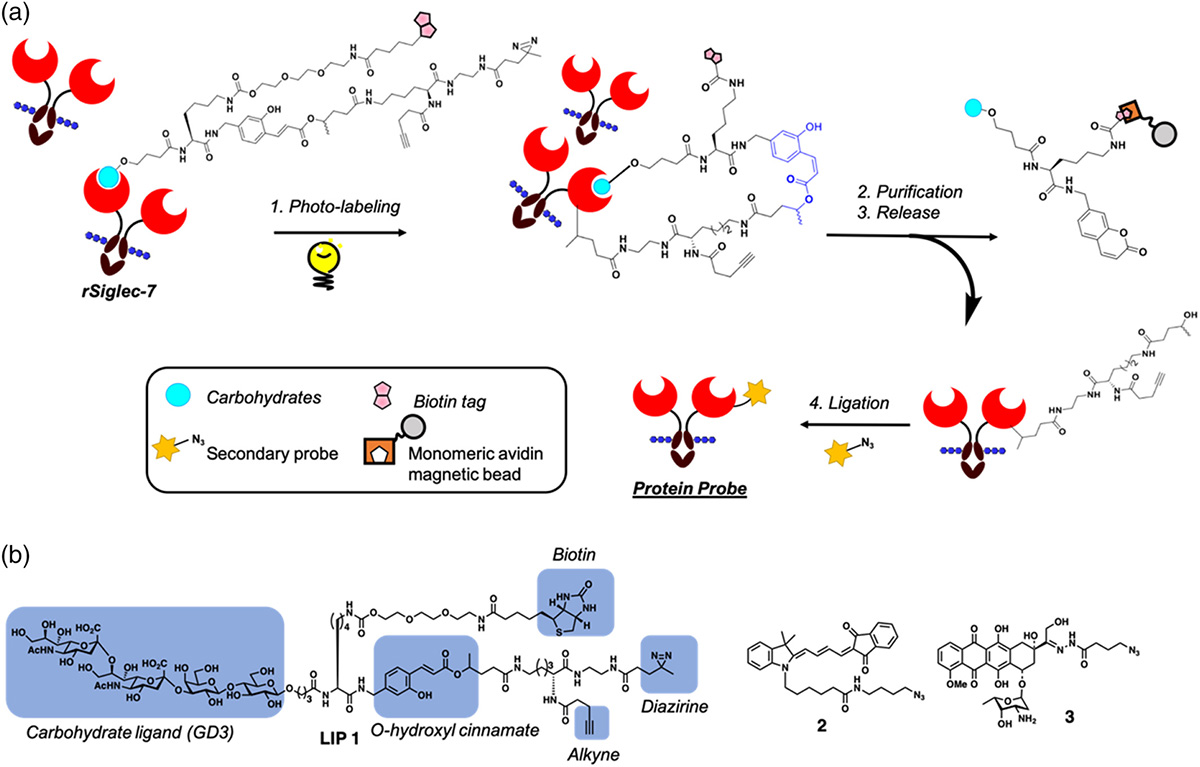
 中央研究院 生物化學研究所
中央研究院 生物化學研究所
The development of a ligand-assisted imprinting probe (i.e., LIP 1) for the site-specific labeling of recombinant Siglec-7 protein (rSiglec-7) is reported. LIP 1 is a LIP bearing a ganglioside GD3 glycan, a natural ligand for Siglec-7, that is embedded in an ortho-hydroxyl cinnamate core, which exhibits UV-light-dependent conformational changes, and is appended with a clickable alkyne handle. LIP 1 enables the selective introduction of an alkyne at the threonine residue 91 (Thr91), which is proximal to the carbohydrate-binding pocket of Siglec-7, as identified by LC–MS/MS analysis. By using LIP 1, an azide-containing environment-sensitive merocyanine dye is conjugated to rSiglec-7 by a click reaction, which is capable of directly imaging live HeLa cells as a result of highly specific interactions with cell-surface glycoproteins containing sialic acid. Moreover, the conjugation of doxorubicin (Dox) to alkynylated rSiglec-7 retains the original activity of protein binding to the interacting natural GD3 glycan ligand, as revealed by microarray analysis; hence, the rSiglec-7 conjugate can serve as cargo (Dox)-delivery vehicle to Siglec-ligand-expressing HeLa cells. The LIP labeling strategy described herein is expected to be a general strategy for the future development of glycoprobes for investigating lectin-glycan interactions.
